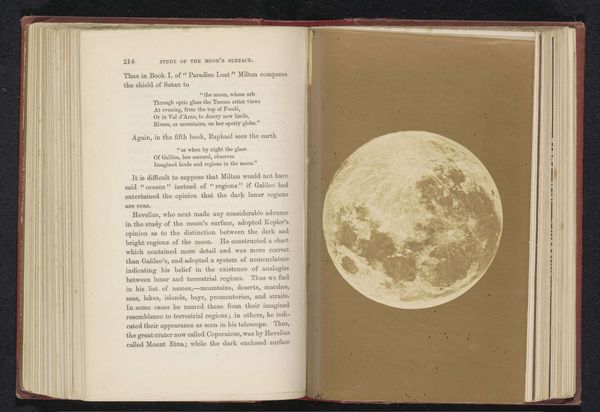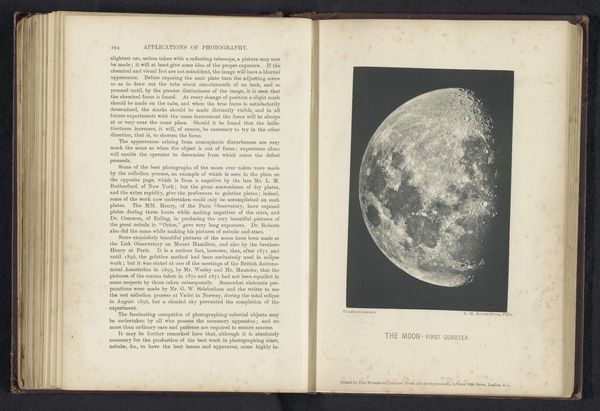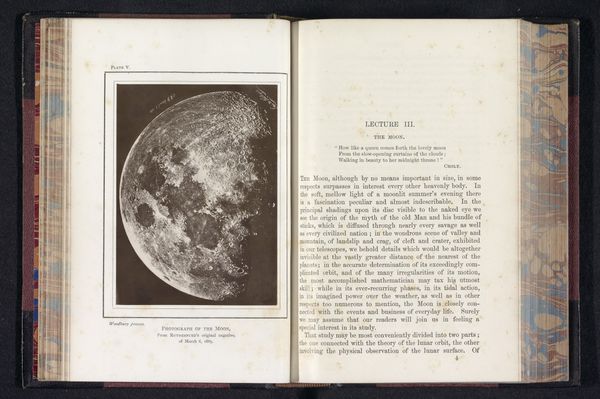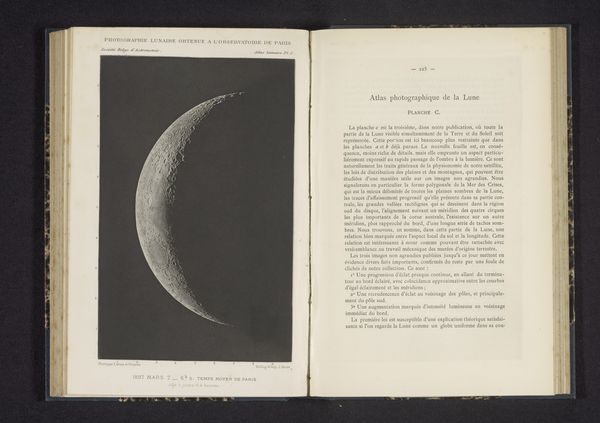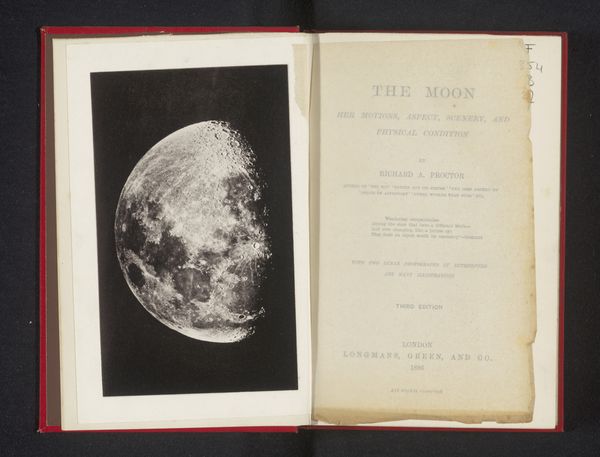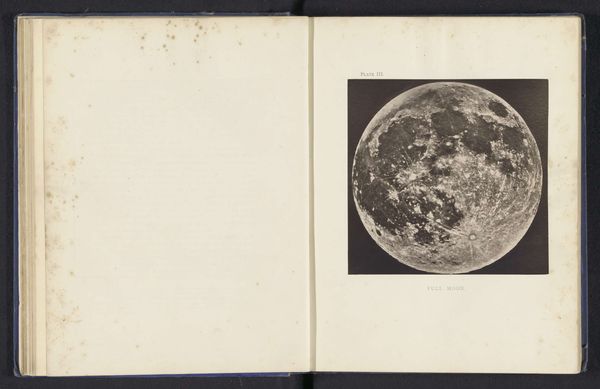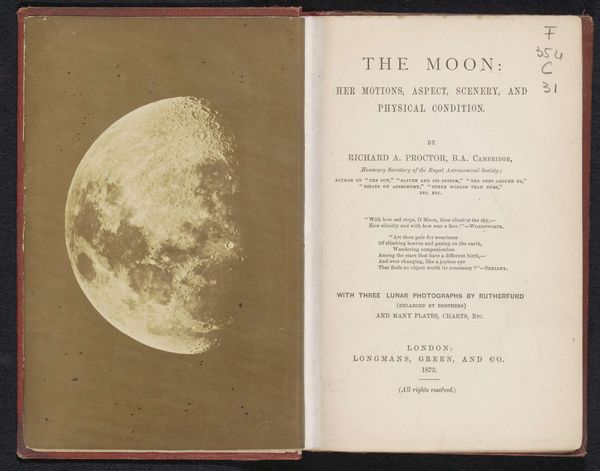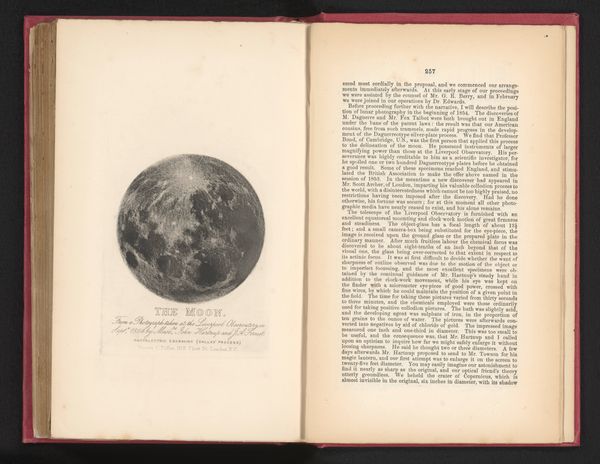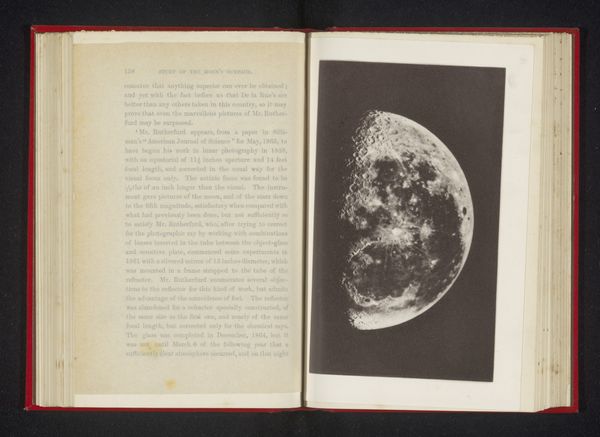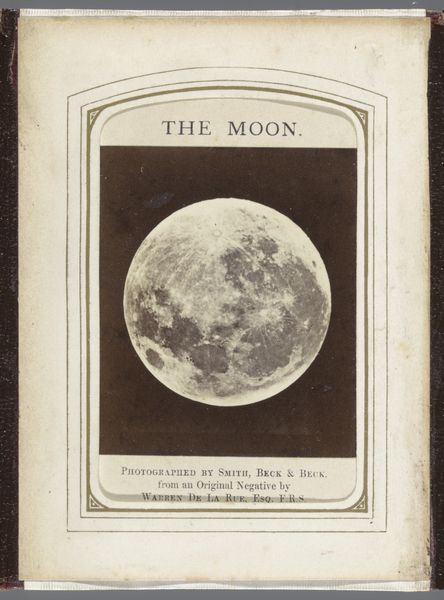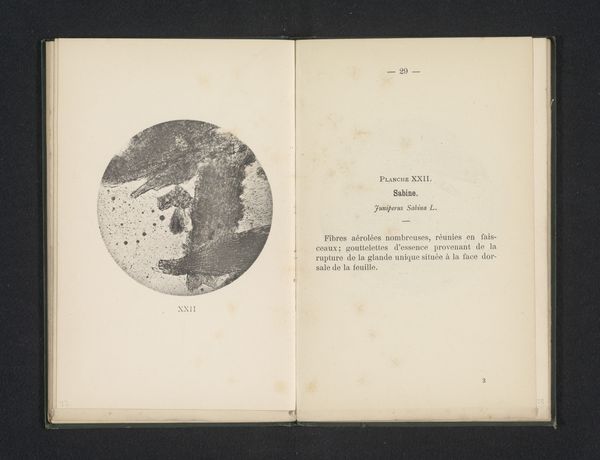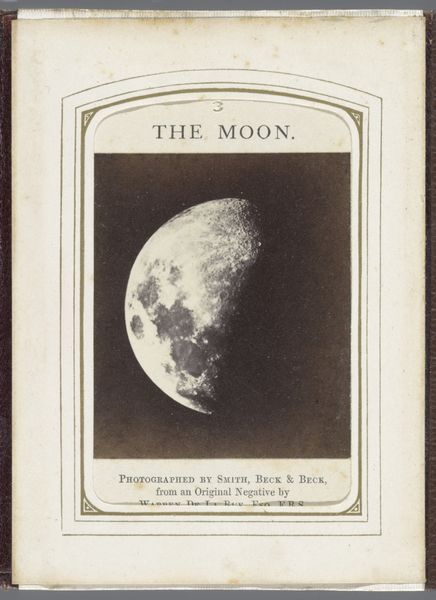
print, photography
#
portrait
#
still-life-photography
# print
#
neo-impressionism
#
landscape
#
photography
#
orientalism
#
academic-art
Dimensions: height 207 mm, width 150 mm, thickness 30 mm
Copyright: Rijks Museum: Open Domain
Curator: Isn't it fascinating how a single image can evoke such a profound sense of wonder? Editor: Absolutely. Staring at this, my immediate thought is...quietude. The stillness of space, broken only by the cold light of that distant rock. It’s strangely isolating. Curator: This is "In Starry Realms," an illustration featured in Sir Robert Stawell Ball's 1892 publication of the same name. Ball was, among other things, a professor of astronomy at the University of Cambridge. Editor: So, this isn't just some fanciful depiction of space but a photographic print included in an astronomy text. Knowing that it’s rooted in scientific documentation shifts my perspective. It makes me think about access – who had the privilege of seeing images like this, of comprehending the cosmos, at the time? Curator: Precisely! Ball intended his work to popularize astronomy, bringing celestial wonders to a wider audience. It's an object deeply embedded in the culture and the technology of its time. The book aimed to demystify, but that stark, monochrome print of the moon retains something ethereal, don't you think? Editor: Undeniably. There's a tension, a push and pull between the scientific gaze and the sheer beauty of the cosmos. The cratered surface, that ghostly glow...it's objective data, but arranged, presented in a way that sparks something deeply personal, almost spiritual, in the viewer. What I mean to say is that this wasn't just for scientific advancement, the illustration, here, clearly transcends utility. It's artistry! Curator: I concur. By framing this scientific photograph as part of an artistic vision—or at least as a subject worthy of artistic interpretation—Ball acknowledges the cultural power inherent in celestial imagery. It reflects both the scientific ambition and the aesthetic sensibilities of the late 19th century. Editor: It's quite interesting to look at the past through art to understand what science was perceived as at the time. So, next time you look at the sky at night, remember how people wanted to understand the secrets of our universe with these kinds of images from astronomy texts.
Comments
No comments
Be the first to comment and join the conversation on the ultimate creative platform.
